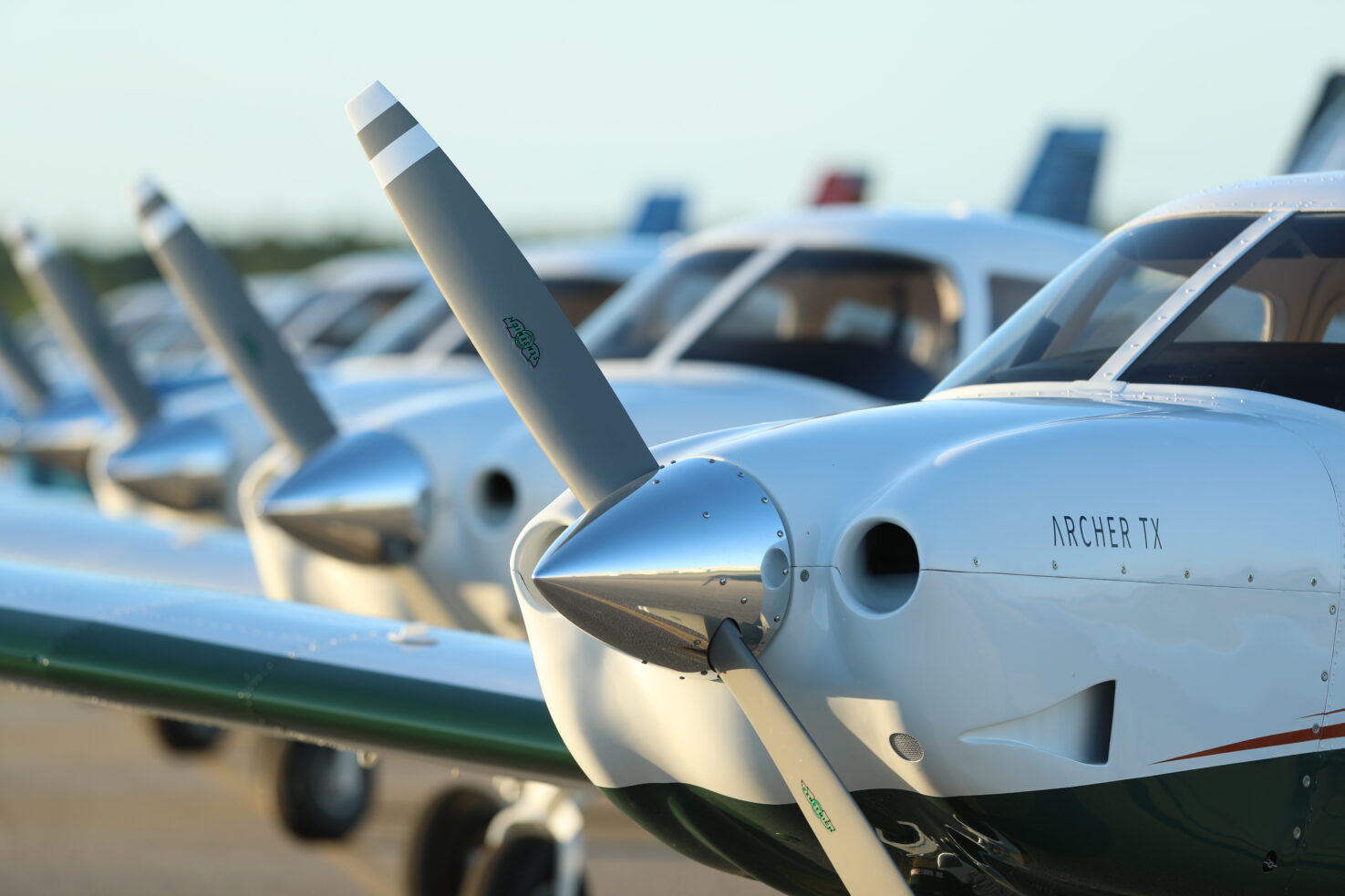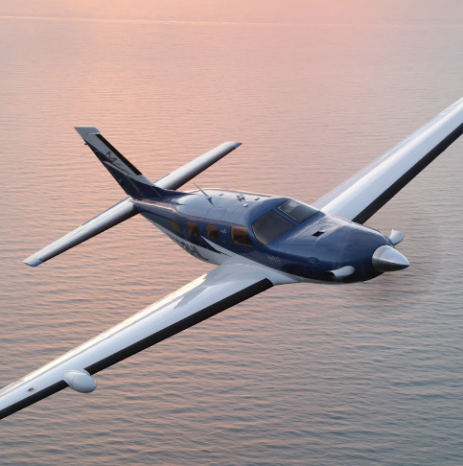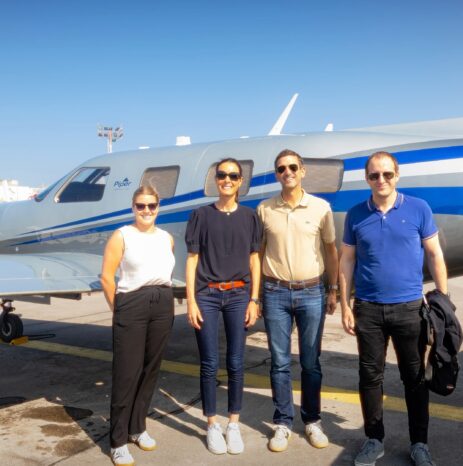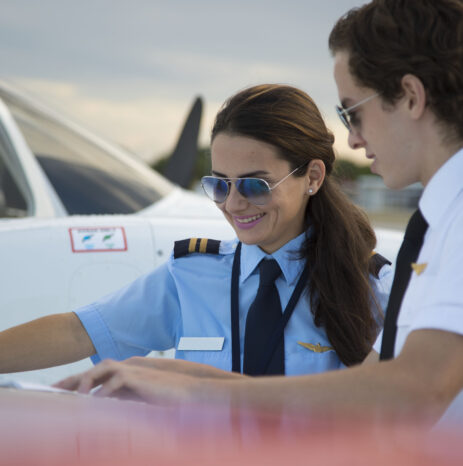Learning to fly is an exciting journey, and it begins with learning the basic components of the aircraft. For student pilots, knowing the essential parts of an airplane and how they function is the foundation for safe and effective training.
We created this guide to help aspiring aviators grasp the basics of airplane anatomy and see how these parts work together to create a safe, stable flying experience. By exploring the key features of training aircraft, you’ll gain insight into how they are specifically designed to support learning and make the flight training process intuitive and accessible.
Main Parts of an Airplane
Fuselage
The fuselage is the central structure of an airplane, serving as the main body to which all other components, such as the wings, tail and landing gear, are attached. For student pilots, it’s far more than just the mainframe of the aircraft; it’s where the training experience comes together.
- Flight Deck Access: The fuselage houses the flight deck, where aspiring pilots will spend their training learning to operate flight controls and monitor instruments.
- Baggage Area: This area provides space for equipment that is non-essential during flight, ensuring that you have room for everything you should need, from pre-flight planning to post-flight inspection.
- Structural Design: Most training planes, like Piper models, use a semi-monocoque design, a strong yet lightweight construction that ensures safety and efficiency during rigorous training sessions.
Wings
Wings are fundamental to keeping an airplane in the sky by generating the lift needed for flight. As air flows over the curved surface of the wing, it creates differences in air pressure due to the acceleration of airflow over the top of the wing — lower pressure on top and higher pressure on the bottom. This imbalance produces an upward force called lift, which counteracts the weight of the airplane and allows the airplane to climb and stay airborne. Wings on training planes are designed for stable, predictable handling, which provides a forgiving environment for students to practice and refine their skills.
Empennage (Tail Assembly)
The empennage, or tail assembly, helps maintain stability and enables precise control of an aircraft during flight. It ensures a steady and predictable flight path by counteracting unwanted movements along the pitch (up-and-down) and yaw (side-to-side) axes. Additionally, it streamlines the aircraft’s overall aerodynamics, reducing drag and contributing to smoother performance.
The empennage includes the horizontal stabilizer and vertical stabilizer, which work together to help manage the aircraft’s movements:
- Horizontal Stabilizer: The horizontal stabilizer keeps the aircraft balanced by opposing pitching forces. It ensures stability during climbs, level flight and descents, helping the airplane maintain consistent altitude and smooth operation.
- Vertical Stabilizer: The vertical stabilizer prevents unwanted yaw, keeping the airplane directionally stable and aligned with the desired flight path. This component is particularly critical during straight-and-level flight and while maintaining control during turns.
Landing Gear
The landing gear is vital for takeoffs, landings and ground handling, giving the aircraft stability and control on the ground. Learning to use the landing gear begins with mastering directional control during takeoffs, executing smooth landings that touch down on the main wheels first and handling crosswind conditions precisely.
Most training planes use a tricycle landing gear, a setup with two main wheels and a nose wheel. Tailwheel landing gear — where the main wheels are in front, and a smaller wheel supports the tail — is less common in training aircraft, but it remains valuable for advanced pilots looking to expand their skills. Tailwheel designs require more precise rudder control during ground handling, allowing students to refine their coordination.
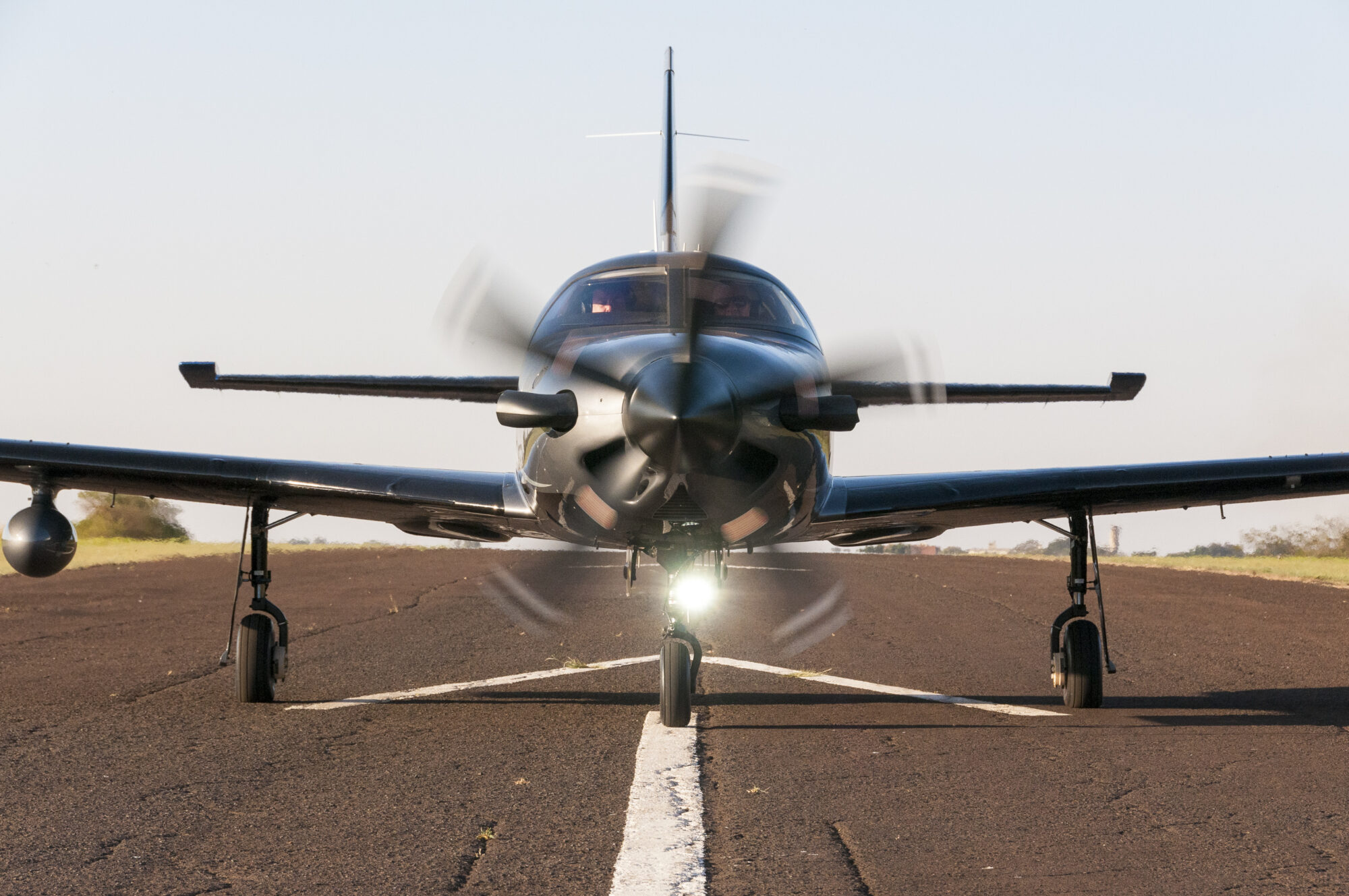
Powerplant (Engine and Propeller)
The powerplant is the heart of an aircraft, combining the engine and propeller to generate the thrust needed for flight. The engine works by turning the propeller, which accelerates air backward, creating thrust forward. As the propeller spins, its angled blades grab and accelerate the air backward, creating an equal and opposite forward force that propels the aircraft. Picture the propeller slicing through the air like a fan or screw, continuously pulling the airplane forward as it spins.
As students advance, they’ll also learn about the relationship between power and thrust: while the engine’s power output remains steady, thrust decreases as airspeed increases.
Flight Deck
The flight deck serves as the command center of an aircraft, where students interact with flight instruments, flight controls and avionics to manage the plane. One of the first things student pilots will learn is the “six-pack” of primary flight instruments, essential for safe and effective flight operations:
- Airspeed Indicator: Displays the aircraft’s speed relative to the surrounding air.
- Attitude Indicator: Shows the plane’s orientation relative to the horizon.
- Altimeter: Indicates altitude above sea level.
- Turn Coordinator: Helps pilots maintain coordinated turns.
- Heading Indicator: Provides directional guidance.
- Vertical Speed Indicator: Tracks climb or descent rates.
Flight Controls
Flight controls are essential for managing an aircraft’s movement through three dimensions of flight, making them a foundational element of any pilot’s training. These controls are divided into primary and secondary flight controls, each serving a specific purpose in ensuring safe and efficient operations.
Primary flight controls allow pilots to maneuver the aircraft in three key axes:
- Ailerons: Located on the trailing edges of the outboard portion of the wings, ailerons control the aircraft’s roll, enabling smooth turns by tilting the wings up or down.
- Elevator/Stabilator: Found on the horizontal stabilizer, it manages pitch, raising or lowering the nose to climb, descend or maintain level flight.
- Rudder: Positioned on the vertical stabilizer, the rudder adjusts yaw, helping pilots align the aircraft during turns or maintain control in crosswind conditions.
Secondary flight controls enhance performance and reduce pilot workload during specific phases of flight:
- Flaps: Found on the inboard trailing edges of the wings, flaps increase lift and drag, making them critical for slow-speed operations like takeoff and landing. They allow steeper approaches and shorter takeoff rolls, which are valuable skills during and after pilot training.
- Trim tabs: Often located on the elevator, trim systems relieve control pressures during steady flight, enabling pilots to maintain a consistent climb or descent without constant manual adjustments.
Avionics
Avionics systems are the backbone of modern aviation, equipping pilots with the tools needed for communication, navigation and overall situational awareness. Avionics help students develop essential skills in communication and navigation, laying a solid foundation for advanced flight operations and instilling confidence in handling real-world scenarios.
Communication Systems
- Very High Frequency (VHF) Radios: Enable short-range communication with air traffic control and other aircraft, ensuring clear instructions and coordination during all flight phases.
- High Frequency (HF) Radios (less common in training planes): Used for long-range communication, primarily on trans-oceanic flights.
Navigation Systems
- Global Positioning System (GPS): Provides accurate position information worldwide, allowing students to follow flight plans and consistently maintain a precise course.
- VHF Omnidirectional Range (VOR): A ground-based navigation tool that guides pilots to specific locations or along defined routes, ideal for practicing waypoint tracking and course corrections.
Students rely on avionics during flight training to develop critical communication and navigation skills. They learn to communicate effectively with air traffic controllers to obtain clearances, follow instructions and stay updated on situational changes. Avionics systems help students plan, execute and adjust flight paths precisely while interpreting navigation displays and information to deepen their understanding of maintaining safe and efficient flight operations.
How Airplane Parts Work Together
An airplane’s components work in unison to ensure safe and efficient flight, creating the foundation for every maneuver students will learn in flight school. Each part contributes to a critical aspect of flight, and understanding their interaction is essential for mastering aircraft control.
The engine and propeller generate thrust, propelling the aircraft forward. The propeller accelerates air backward, creating an equal and opposite forward force, a practical application of Newton’s Third Law of Motion. As the aircraft moves forward, the wings create lift to counteract weight. Their airfoil shape generates a pressure difference — lower pressure above and higher pressure below — producing the upward force needed to sustain flight. Together, thrust and lift enable the airplane to take off, climb and cruise.
Flight controls work in tandem to give pilots precise command over the aircraft’s movement in three dimensions, allowing for smooth and coordinated flight. When performing a turn, for example, ailerons tilt the wings to initiate the roll, while the rudder prevents unwanted yaw to ensure the turn remains balanced. At the same time, the elevator adjusts pitch to maintain altitude, allowing for a controlled and coordinated maneuver.
Secondary controls, like flaps and trim, refine the aircraft’s performance. For example, flaps allow for safer and more controlled approaches during landings and trim tabs reduce the need for constant adjustments, enabling smoother and more focused flying during steady flight. By practicing these controls, student pilots gain an understanding of how to manage workload efficiently and adapt to different flight scenarios.
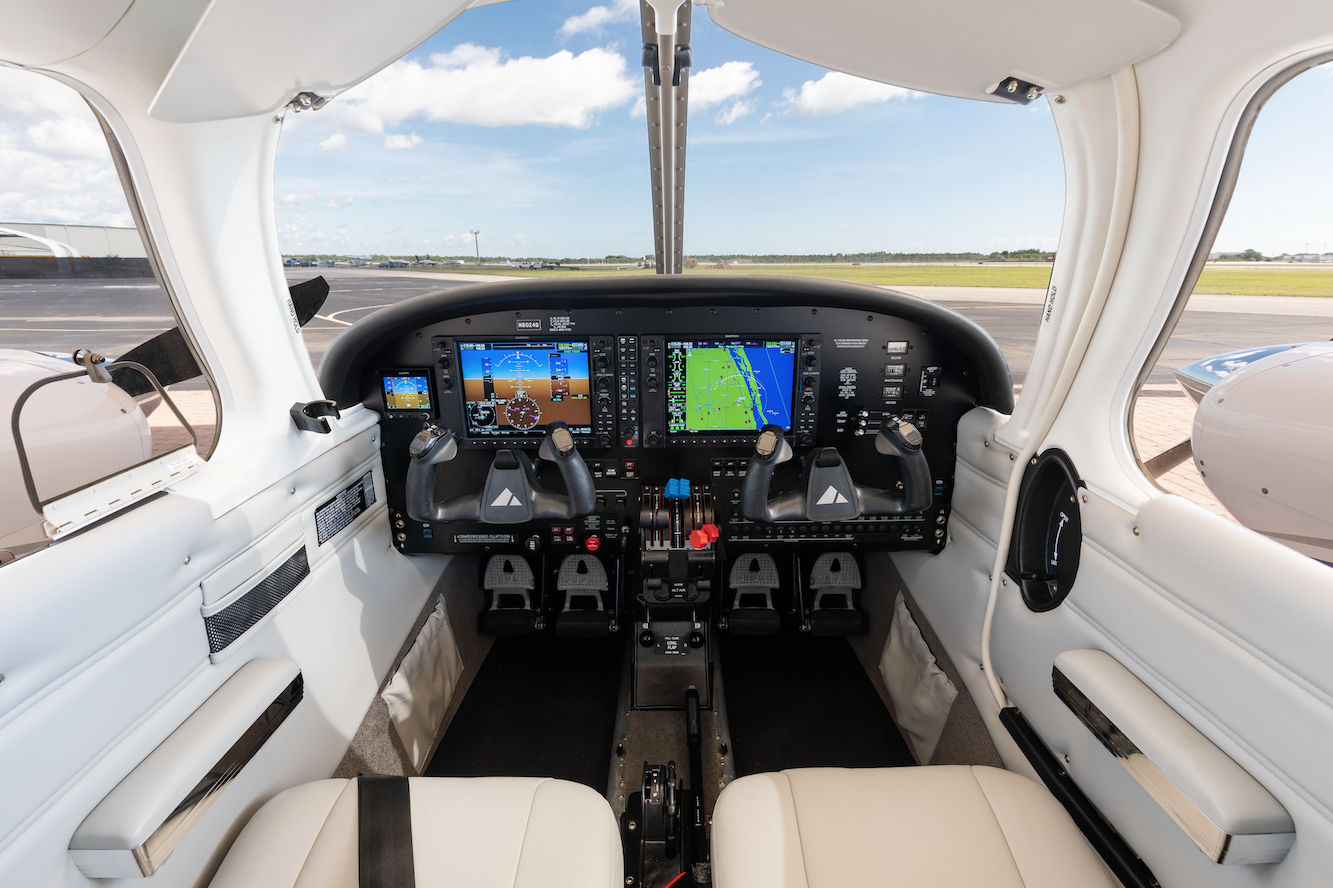
Aircraft Design for Flight Training
Training aircraft are specifically designed with features that make learning to fly safer, easier and more intuitive for students. From stable handling to accessible flight deck layouts, these design elements support student pilots as they build foundational skills and confidence.
- Stable Performance: Training planes, such as those with semi-monocoque fuselage designs, prioritize stability, allowing students to practice maneuvers in a forgiving setting. This consistent handling creates a conducive learning environment that is inviting for new pilots. Piston engines are the standard in most training aircraft, delivering consistent power and being easier to operate and maintain than more complex engines like turboprops or jets.
- Enhanced Visibility: Wing configurations play a crucial role in flight training. Low-wing designs provide unobstructed views of the ground and horizon, improving situational awareness during takeoffs, landings and turning maneuvers. Conversely, high-wing designs offer better downward visibility, which is ideal for certain training scenarios like ground reference maneuvers.
- Intuitive Flight Deck Layouts: Student-friendly flight decks are designed to be simple and clear in mind. Essential controls, like throttle and mixture levers, are grouped together, while instruments are positioned for easy scanning. Primary flight instruments, like the “six-pack,” are prominently displayed to help students monitor critical data such as airspeed, altitude and attitude without distraction.
- Accessible Flight Controls: The ergonomic placement of flight controls, like the yoke or control stick, ensures that students can seamlessly manage ailerons, elevators and rudder inputs during basic maneuvers. This thoughtful design helps build muscle memory and coordination early in training.
- Landing Gear: Most training planes use tricycle landing gear for enhanced stability and ease of control during taxiing, takeoffs and landings. The nose wheel keeps the aircraft level, improves forward visibility and makes steering intuitive, allowing for smoother ground handling and helping students build confidence in directional control.
- Stability: The nose wheel keeps the aircraft level during taxiing, takeoffs and landings, reducing the risk of tipping forward, which is ideal for beginners learning basic ground control.
- Improved Visibility: Tricycle gear provides a level attitude, giving student pilots a clear view of the runway and their surroundings during taxi, takeoff and landings.
- Simplified Ground Handling: The nose wheel makes steering more intuitive, allowing smoother taxiing and better directional control during takeoff rolls.
What Every Flight Student Should Know
Understanding how airplane parts work together is a foundational skill for student pilots, as it directly impacts safety, control and confidence during flight training. Instructors emphasize practical applications that help students connect theoretical knowledge with real-world operations.
Pre-flight inspections are among the first routines students learn, ensuring the aircraft is airworthy and ready for safe operation. These checks foster attention to detail and a sense of responsibility:
- Fuselage Inspection: Students check for damage or abnormalities, ensuring the aircraft’s structural integrity is uncompromised.
- Fuel System Checks: Confirming fuel levels and checking for contaminants or leaks is one way pilots mitigate the risk to avoid in-flight emergencies.
- Flight Control Verification: Students test ailerons, elevators and rudders for smooth and correct responses to inputs, ensuring the controls are fully operational.
Learning to coordinate pitch, roll and yaw is a core focus during flight training:
- Pitch Control: Using the elevator, students practice managing climbs, descents and level flight. Adjusting pitch while coordinating engine power is essential for maintaining stable altitude and airspeed.
- Roll Control: Ailerons are introduced early in training, helping students execute smooth, balanced turns by tilting the aircraft’s wings.
- Yaw Control: The rudder helps align the aircraft’s nose during turns or in crosswind conditions, preventing slips or skids. Students practice coordinating rudder inputs with aileron movements for precise maneuvers.
Piper’s training aircraft are designed to support these practical applications, making them ideal for student pilots. Their intuitive flight deck layouts, advanced safety features and forgiving handling make them ideal platforms for building foundational skills. Equipped with advanced Garmin avionics and durable airframes, Piper trainers allow students to confidently learn and execute the essential tasks they need to master safe and effective flight operations.
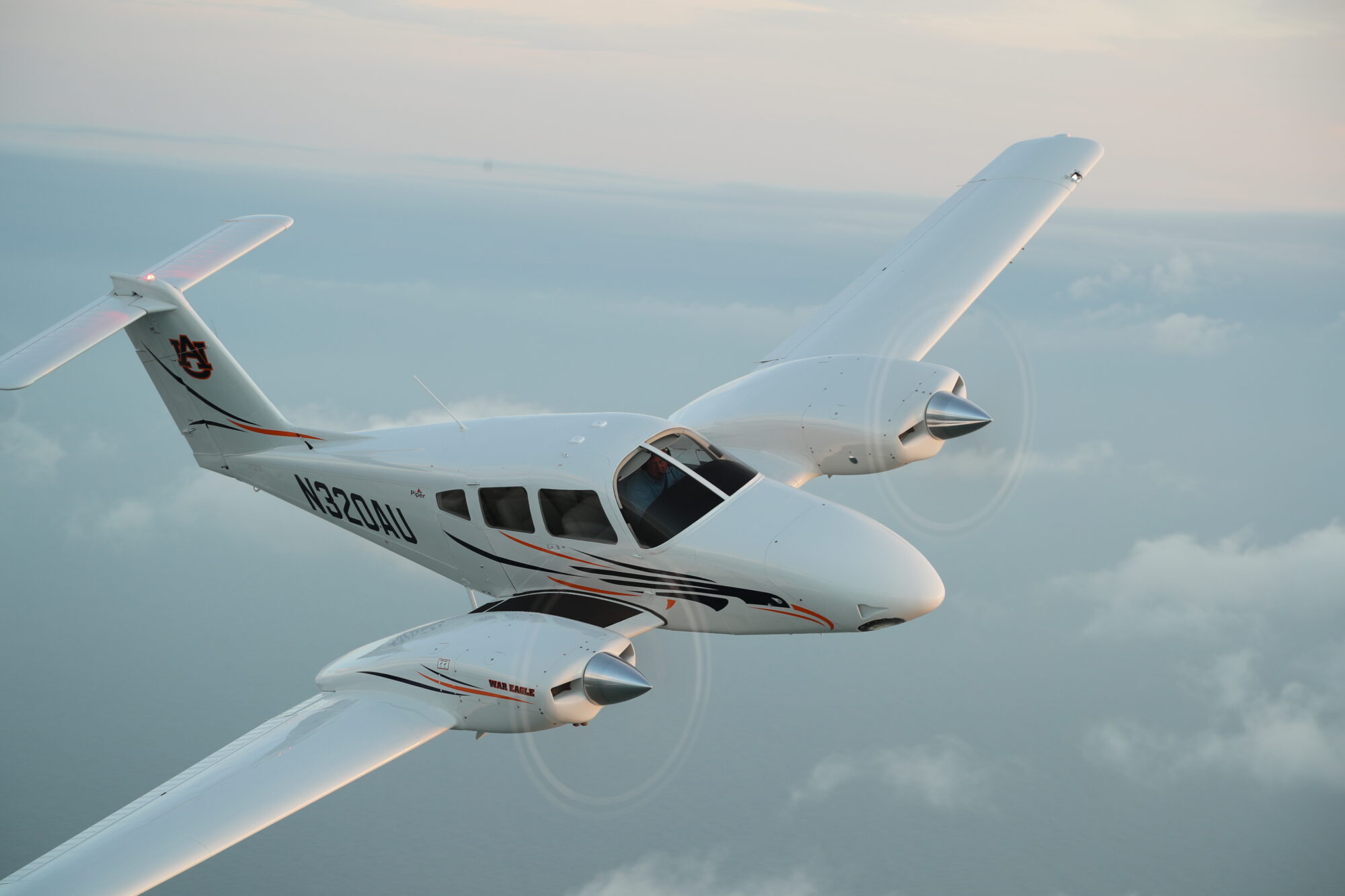
Start Your Flight Training With Piper’s Flight School Alliance
Successful flight training starts with choosing the right flight school, and schools that feature Piper aircraft stand out for their commitment to quality, safety and advanced student training. Piper’s Flight School Alliance connects aspiring pilots with elite training programs that use Piper’s trusted fleet, including the Pilot 100i, Archer DX, Archer TX and Seminole.
Students training on Piper aircraft gain access to modern avionics, dependable performance and proven reliability, which help build their confidence and set a strong foundation for their aviation careers. To find a school that offers the best in flight training, explore Piper’s Flight School Alliance map and begin your journey to the skies.
